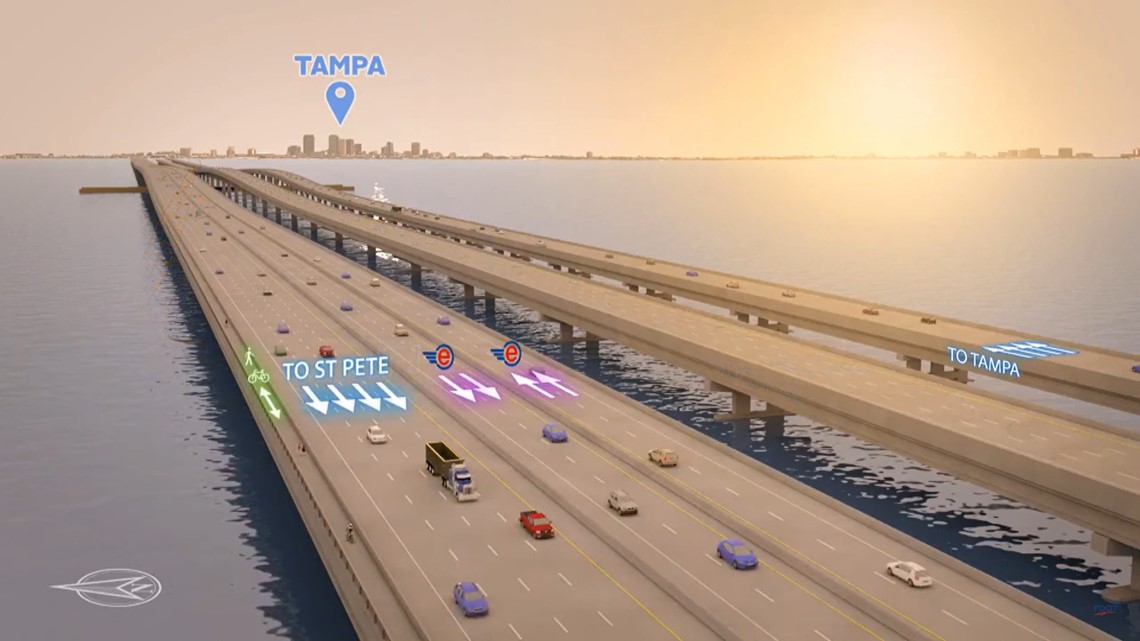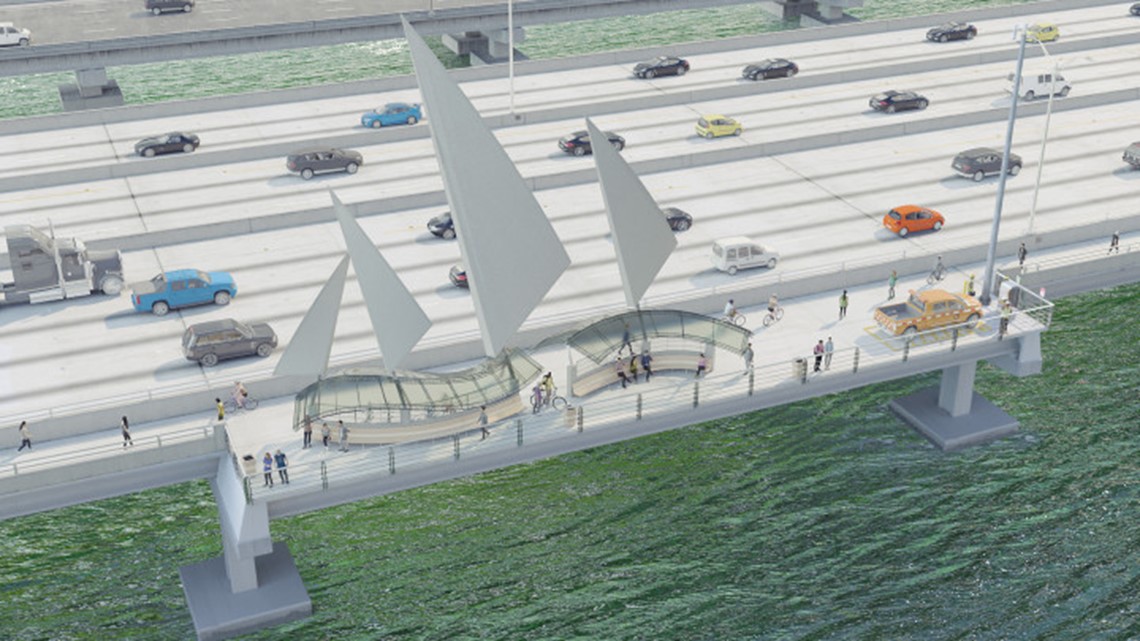TAMPA, Fla. — Construction is ongoing on the new Howard Frankland Bridge that, when complete, thousands of people will drive across every day, according to the Florida Department of Transportation.
Drivers already do on the existing structure — one of the main arteries for those getting back and forth from Tampa and St. Petersburg.
FDOT officials started planning the project in 2017 and began construction in 2020. By 2025, it's estimated the new bridge will be complete.
“A project this size is a large logistical effort,” FDOT project manager Austin Petersen said.
Petersen said there are about 275 workers on the job, with many of those jobs being supplied to locals.
It’s a project that will break a record for state bridges.
“It will be the largest bridge by deck area in the state,” Petersen said. The total project costs about $865.3 million, but the project itself is necessary because the old bridge is reaching the end of its service life, he added.
Each bridge is said to have a service life of up to 80 years. The Howard Frankland Bridge was constructed in 1959, making it 64 years old.
In the next couple of years, it’ll be gone.
“The old bridge, the plan is for it to be demolished and pulverized and recycled,” Petersen said.


As the project manager, Petersen expects the new bridge to be fully operational by the end of 2025.
“This new structure is going to be around 170 feet wide,” Petersen said. That includes four lanes and four express lanes, two in each direction. There will also be a shared-use path for people to bike or walk across.
Petersen said it will be similar to what exists on the Courtney Campbell Causeway. FDOT officials explained adding the shared used path was something the community expressed they wanted.
“On the new bridge on the north side, there will be a shared use path that will be a bicycle and pedestrian facility that will cross from one end to the other of the new bridge,” Petersen added.


FDOT data shows that prior to the pandemic, the annual average daily traffic across the Howard Frankland Bridge was about 169,500 vehicles. In 2022, that figure was about 152,000 vehicles — and is only expected to increase given the influx of new residents to the Tampa Bay region.
“Traffic demand now and in the future is a large reason as to why this bridge is being constructed,” Petersen said.
With rainy season approaching, project workers are preparing for safety measures when it comes to wind and rain.
“Work over water, so that does present a challenge for sure,” Petersen added when discussing the completion date.
Despite potential weather delays, FDOT officials estimate by mid-2025, you should be able to drive or walk across the new bridge. Then in late 2025, it should be complete.

